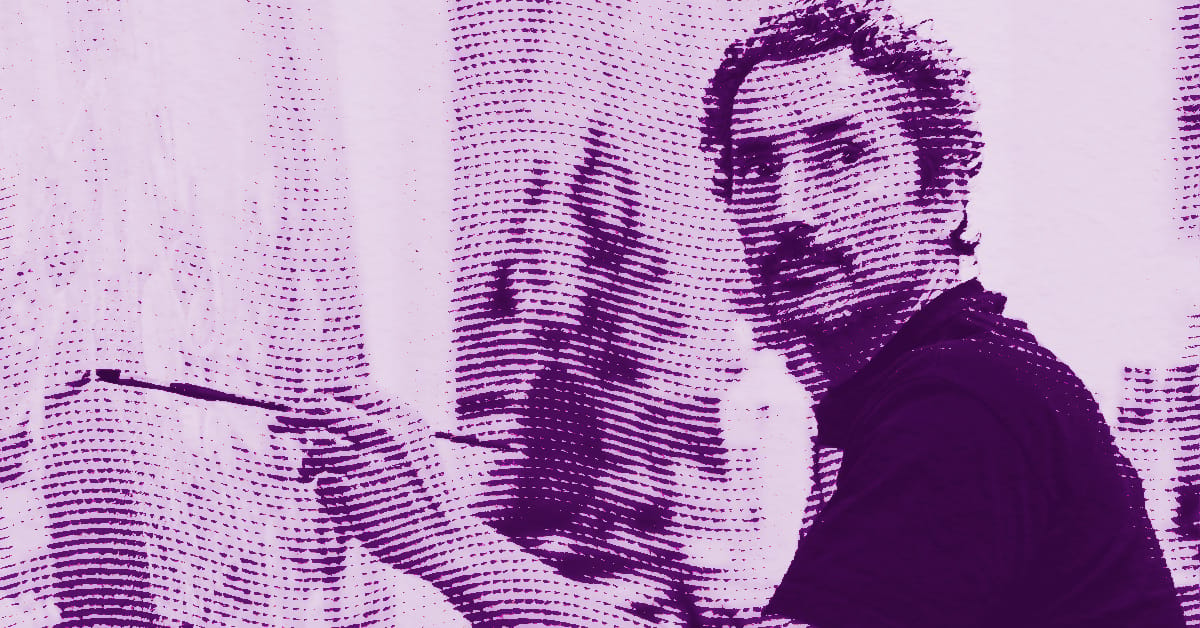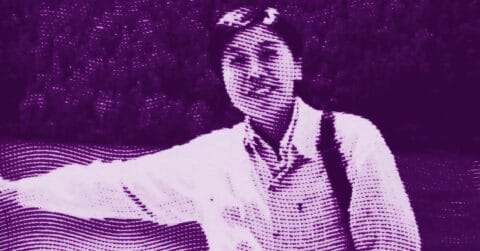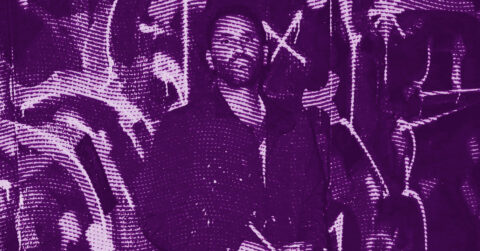Listen to me carefully, you bunch of snobs: with Kent Monkman we are witnessing the emergence of one of the most radically subversive artists of our time. This man, a member of the Fisher River Cree Nation, born in 1965, now stands as the great disruptor of colonial narratives entrenched in our museum institutions. His work executes a historical revision of unprecedented boldness, armed with brushes and an alter ego in high heels that upends our most deeply rooted certainties.
Monkman’s work acts as a vast project to rewrite the history of Western art, where each canvas becomes an ideological battlefield. His monumental paintings, executed in a neo-Baroque style of remarkable technical virtuosity, appropriate the aesthetic codes of European masters to better turn them against themselves. This artistic infiltration strategy reveals a remarkable tactical intelligence: rather than outright rejecting Western pictorial heritage, Monkman seizes it to make it the instrument of his own narrative emancipation.
At the heart of this revolutionary endeavor stands Miss Chief Eagle Testickle, a flamboyant character who embodies the full complexity of contemporary Indigenous identity. This mythological trickster figure, inspired by the Cree tradition of Wisakedjak, becomes under Monkman’s brush a creative agent of chaos who traverses eras with sovereign nonchalance. Miss Chief emerges in the most canonical historical scenes of Western art, transforming by her mere presence the meaning of these foundational narratives.
Opera as a metaphor for cultural resistance
Monkman’s artistic approach finds a particularly fertile resonance in lyric art. Like the great 19th-century operas, his works unfold complex narratives where personal tragedy and collective drama intertwine. This operatic dimension explicitly appears in his latest project “The Miss Chief Cycle” [1], a lyric creation to be presented in its world premiere at Montreal’s Salle Bourgie on September 30, where the memories of Miss Chief Eagle Testickle will take musical form.
Opera, the total art par excellence, offers Monkman a structural model for his museum interventions. His installations transform the exhibition space into a theatrical stage where each element contributes to a global mise-en-scène. The “Crystal Theatre” (2006), a tipi-installation adorned with a chandelier and sparkling beads, directly evokes the aesthetic of baroque opera with its decorative splendor and assumed theatricality. This reference to lyric art is by no means accidental: it situates Monkman’s work within a tradition of total spectacle where formal beauty serves as a vehicle for a radical political statement.
The narrative structure of the opera, with its arias, recitatives, and ensembles, finds its equivalent in the sequential organization of Monkman’s exhibitions. The artist conceives his museum journeys as real librettos where each room corresponds to an act, each artwork to an aria, a solo sung piece. This dramaturgical approach culminates in “Shame and Prejudice: A Story of Resilience” (2017-2020), an exhibition conceived as an opera in several scenes recounting Canada’s colonial history. Miss Chief plays the role of the tragic prima donna, an omniscient narrator whose fictional memoirs structure the entire story.
The lyrical art also informs the gestures and stage presence of Miss Chief in Monkman’s performances. His public appearances borrow from the diva opera codes: sumptuous costumes, theatrical poses, magnetic presence that electrifies the audience. This performative dimension transforms each museum intervention into a spectacular event, where art becomes a pretext for a total experience mixing aesthetic emotion and political awareness.
The influence of opera is felt even in the visual conception of Monkman’s paintings. His compositions, often organized around a central character dominating the scene, recall the scenographic arrangements of lyrical art. The dramatic lighting bathing his paintings evokes theatrical lighting, creating chiaroscuro effects that magnify the emotional intensity of the depicted scenes. This theatrical aesthetic confers a spectacular dimension to the works that immediately captures the spectator’s attention.
Architecture of memory and geography of power
Monkman’s work maintains a particularly fertile dialectical relationship with architecture. His interventions in museum institutions function as temporary architectures that redefine the use and meaning of spaces. This architectural approach to art reveals a keen understanding of the relationships between space and power, between geography and ideology.
Museums, architectural institutions par excellence, constitute the favored ground for Monkman’s interventions. The artist intuitively grasps that these buildings are never neutral: their spatial organization, their circulation, their hierarchy of artworks translate a specific worldview. By tackling the permanent collections and reorganizing their presentation, Monkman operates a true architectural deconstruction of institutional narratives.
The installation “My Treaty is With the Crown” (2011) perfectly illustrates this strategy. By transforming the Leonard & Bina Ellen gallery into a military camp with French and British tents, Monkman creates an ephemeral architecture that disrupts the usual perception of museum space. This installation functions as a counter-architecture that opposes the mineral permanence of the museum with the nomadic precariousness of temporary structures.
The architectural dimension also appears in the very design of Monkman’s tipi-installations. These structures, traditionally mobile and adaptable, oppose by their nature the fixed and monumental architecture of Western museums. The “Boudoir de Berdashe” (2007) or the “Crystal Theatre” (2006) create intimate and sensual spaces that radically contrast with the marble coldness of traditional exhibition rooms.
This opposition between indigenous architecture and colonial architecture deeply structures Monkman’s political vision. The artist shows how the forced urbanization of indigenous populations is accompanied by architectural violence: replacement of traditional structures by standardized buildings, negation of nomadic lifestyles, imposition of a geography of control. His series “Urban Res” (2013-2016) precisely explores this issue by transplanting his characters into the degraded urban environments of Winnipeg.
Museum architecture itself becomes a subject of critical inquiry for Monkman. His monumental paintings, designed to dominate the exhibition space, compete with the architecture of the buildings housing them. The diptychs installed at the Metropolitan Museum of Art in 2019-2020 thus created a direct dialogue with the neoclassical architecture of the Great Hall, proposing an alternative reading of this geography of power.
Monkman’s spatial conception also borrows from indigenous architectural traditions the notion of circularity. His exhibitions often are organized according to circular paths that break with the usual linearity of museum presentations. This spatial organization reflects an indigenous cosmology where time is not linear but cyclical, where past and present coexist in a perpetual movement of renewal.
Architecture finally becomes for Monkman a metaphor for identity construction. His characters evolve in hybrid spaces that mix traditional and contemporary references, creating impossible geographies where tipis and skyscrapers, prairies and urban centers coexist. This imagined architecture reflects the complexity of contemporary indigenous identity, torn between tradition and modernity, community belonging and urban integration.
The revolution of the gaze
The impact of Monkman’s work goes far beyond the strictly artistic sphere to extend to the entire contemporary cultural field. His work operates a true epistemological revolution that questions the very foundations of our relationship to history and representation. This influence is measured as much by the critical reception of his works as by their ability to generate new modes of perception and interpretation.
Monkman’s international success attests to the universal relevance of his message. His exhibitions attract an audience that far exceeds the usual circles of contemporary art, proof that his message finds a deep resonance in current concerns. However, this popularity should not mask the radical nature of his endeavor: Monkman does not merely entertain; he educates and politicizes through art.
Monkman’s influence on the young generation of indigenous artists is particularly notable. His example has freed an artistic voice long constrained by stereotypes and the expectations of the art market. By fully embracing his subjectivity as a gay indigenous artist, Monkman has opened a creative space that today allows the emergence of multiple and complex voices.
The educational dimension of his work also deserves to be highlighted. His works function as true manuals of alternative history that fill the gaps of official teaching. This educational function is particularly exercised among young indigenous people who discover in his work a positive and complex representation of their cultural identity.
Monkman’s art is finally part of a broader movement towards the decolonization of cultural institutions. His work now inspires many museum initiatives that rethink their relationship to collections and their presentation. This institutional influence may be the most lasting impact of his work: having helped transform from within the very structures that perpetuated the exclusion of Indigenous voices.
Monkman has achieved this feat: making art an instrument of social justice without ever sacrificing aesthetic rigor for political effectiveness. His paintings are as alluring as they are unsettling, as captivating as they are educational. This success lies in his unique ability to articulate tradition and modernity, beauty and subversion, personal intimacy and collective commitment. In this regard, Kent Monkman stands as one of the most accomplished artistic figures of his time, a creator who has been able to give visual form to the profound changes of our era.
- “The Miss Chief Cycle,” a lyrical creation presented in its world premiere at the Bourgie Hall, Montreal Museum of Fine Arts, on September 30, 2025. Composition by Dustin Peters, libretto by Gisèle Gordon based on “The Memoirs of Miss Chief Eagle Testickle” by Kent Monkman and Gisèle Gordon, dramaturgy by Kevin Loring.
















